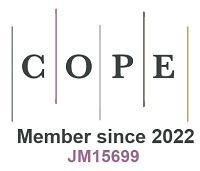REFERENCES
1. Kim, J.; Kim, Y.; Yoo, J.; Kwon, G.; Ko, Y.; Kang, K. Organic batteries for a greener rechargeable world. Nat. Rev. Mater. 2023, 8, 54-70.
2. Xie, J.; Gu, P.; Zhang, Q. Nanostructured conjugated polymers: toward high-performance organic electrodes for rechargeable batteries. ACS. Energy. Lett. 2017, 2, 1985-96.
3. Lee, S.; Kwon, G.; Ku, K.; et al. Recent progress in organic electrodes for Li and Na rechargeable batteries. Adv. Mater. 2018, 30, e1704682.
4. Lu, Y.; Zhang, Q.; Li, L.; Niu, Z.; Chen, J. Design strategies toward enhancing the performance of organic electrode materials in metal-ion batteries. Chem 2018, 4, 2786-813.
5. Mauger, A.; Julien, C.; Paolella, A.; Armand, M.; Zaghib, K. Recent progress on organic electrodes materials for rechargeable batteries and supercapacitors. Materials 2019, 12, 1770.
6. Xie, J.; Zhang, Q. Recent progress in multivalent metal (Mg, Zn, Ca, and Al) and metal-ion rechargeable batteries with organic materials as promising electrodes. Small 2019, 15, e1805061.
7. Chen, Y.; Zhuo, S.; Li, Z.; Wang, C. Redox polymers for rechargeable metal-ion batteries. EnergyChem 2020, 2, 100030.
8. Poizot, P.; Gaubicher, J.; Renault, S.; Dubois, L.; Liang, Y.; Yao, Y. Opportunities and challenges for organic electrodes in electrochemical energy storage. Chem. Rev. 2020, 120, 6490-557.
9. Yin, X.; Sarkar, S.; Shi, S.; et al. Recent progress in advanced organic electrode materials for sodium-ion batteries: synthesis, mechanisms, challenges and perspectives. Adv. Funct. Mater. 2020, 30, 1908445.
10. Friebe, C.; Schubert, U. S. High-power-density organic radical batteries. Top. Curr. Chem. 2017, 375, 19.
11. Wang, D. Y.; Guo, W.; Fu, Y. Organosulfides: an emerging class of cathode materials for rechargeable lithium batteries. Acc. Chem. Res. 2019, 52, 2290-300.
12. Häupler, B.; Wild, A.; Schubert, U. S. Carbonyls: powerful organic materials for secondary batteries. Adv. Energy. Mater. 2015, 5, 1402034.
13. Luo, C.; Borodin, O.; Ji, X.; et al. Azo compounds as a family of organic electrode materials for alkali-ion batteries. Proc. Natl. Acad. Sci. U. S. A. 2018, 115, 2004-9.
14. Peng, C.; Ning, G. H.; Su, J.; et al. Reversible multi-electron redox chemistry of π-conjugated N-containing heteroaromatic molecule-based organic cathodes. Nat. Energy. 2017, 2, 17074.
15. Armand, M.; Grugeon, S.; Vezin, H.; et al. Conjugated dicarboxylate anodes for Li-ion batteries. Nat. Mater. 2009, 8, 120-5.
16. Kim, J.; Lee, J.; You, J.; et al. Conductive polymers for next-generation energy storage systems: recent progress and new functions. Mater. Horiz. 2016, 3, 517-35.
17. Zhang, Z.; Liao, M.; Lou, H.; Hu, Y.; Sun, X.; Peng, H. Conjugated polymers for flexible energy harvesting and storage. Adv. Mater. 2018, 30, e1704261.
18. Sun, T.; Xie, J.; Guo, W.; Li, D.; Zhang, Q. Covalent–organic frameworks: advanced organic electrode materials for rechargeable batteries. Adv. Energy. Mater. 2020, 10, 1904199.
19. Li, J.; Jing, X.; Li, Q.; et al. Bulk COFs and COF nanosheets for electrochemical energy storage and conversion. Chem. Soc. Rev. 2020, 49, 3565-604.
20. Sun, H.; Li, J.; Liang, W.; et al. Porous organic polymers as active electrode materials for energy storage applications. Small. Methods. 2023, e2301335.
21. Luo, D.; Li, M.; Ma, Q.; et al. Porous organic polymers for Li-chemistry-based batteries: functionalities and characterization studies. Chem. Soc. Rev. 2022, 51, 2917-38.
22. Lee, J.; Kalin, A. J.; Yuan, T.; Al-Hashimi, M.; Fang, L. Fully conjugated ladder polymers. Chem. Sci. 2017, 8, 2503-21.
23. Teo, Y. C.; Lai, H. W. H.; Xia, Y. Synthesis of ladder polymers: developments, challenges, and opportunities. Chemistry 2017, 23, 14101-12.
24. Waller, P. J.; Gándara, F.; Yaghi, O. M. Chemistry of covalent organic frameworks. Acc. Chem. Res. 2015, 48, 3053-63.
25. Geng, K.; He, T.; Liu, R.; et al. Covalent organic frameworks: design, synthesis, and functions. Chem. Rev. 2020, 120, 8814-933.
26. Gui, B.; Ding, H.; Cheng, Y.; Mal, A.; Wang, C. Structural design and determination of 3D covalent organic frameworks. Trends. Chem. 2022, 4, 437-50.
27. Shi, Y.; Yang, J.; Gao, F.; Zhang, Q. Covalent organic frameworks: recent progress in biomedical applications. ACS. Nano. 2023, 17, 1879-905.
28. Wang, C.; Zhang, Z.; Zhu, Y.; Yang, C.; Wu, J.; Hu, W. 2D covalent organic frameworks: from synthetic strategies to advanced optical-electrical-magnetic functionalities. Adv. Mater. 2022, 34, e2102290.
29. Zhu, Y.; Xu, P.; Zhang, X.; Wu, D. Emerging porous organic polymers for biomedical applications. Chem. Soc. Rev. 2022, 51, 1377-414.
30. Zhang, T.; Xing, G.; Chen, W.; Chen, L. Porous organic polymers: a promising platform for efficient photocatalysis. Mater. Chem. Front. 2020, 4, 332-53.
31. Yang, D. H.; Tao, Y.; Ding, X.; Han, B. H. Porous organic polymers for electrocatalysis. Chem. Soc. Rev. 2022, 51, 761-91.
32. Zhang, Z.; Jia, J.; Zhi, Y.; Ma, S.; Liu, X. Porous organic polymers for light-driven organic transformations. Chem. Soc. Rev. 2022, 51, 2444-90.
33. Fajal, S.; Dutta, S.; Ghosh, S. K. Porous organic polymers (POPs) for environmental remediation. Mater. Horiz. 2023, 10, 4083-138.
34. Liu, X.; Liu, C. F.; Xu, S.; et al. Porous organic polymers for high-performance supercapacitors. Chem. Soc. Rev. 2022, 51, 3181-225.
36. Holguin, K.; Mohammadiroudbari, M.; Qin, K.; Luo, C. Organic electrode materials for non-aqueous, aqueous, and all-solid-state Na-ion batteries. J. Mater. Chem. A. 2021, 9, 19083-115.
37. Yu, Q.; Xue, Z.; Li, M.; et al. Electrochemical activity of nitrogen-containing groups in organic electrode materials and related improvement strategies. Adv. Energy. Mater. 2021, 11, 2002523.
38. Lu, Y.; Chen, J. Prospects of organic electrode materials for practical lithium batteries. Nat. Rev. Chem. 2020, 4, 127-42.
39. Qin, K.; Huang, J.; Holguin, K.; Luo, C. Recent advances in developing organic electrode materials for multivalent rechargeable batteries. Energy. Environ. Sci. 2020, 13, 3950-92.
40. Zhao, Q.; Zhao, W.; Zhang, C.; et al. Sodium-ion storage mechanism in triquinoxalinylene and a strategy for improving electrode stability. Energy. Fuels. 2020, 34, 5099-105.
41. Weng, J.; Xi, Q.; Zeng, X.; et al. Recent progress of hexaazatriphenylene-based electrode materials for rechargeable batteries. Catal. Today. 2022, 400-1, 102-14.
42. Walczak, R.; Kurpil, B.; Savateev, A.; et al. Template- and metal-free synthesis of nitrogen-rich nanoporous “noble” carbon materials by direct pyrolysis of a preorganized hexaazatriphenylene precursor. Angew. Chem. Int. Ed. Engl. 2018, 57, 10765-70.
43. Lin, Z.; Xie, J.; Zhang, B.; et al. Solution-processed nitrogen-rich graphene-like holey conjugated polymer for efficient lithium ion storage. Nano. Energy. 2017, 41, 117-27.
44. Li, X.; Wang, H.; Chen, H.; et al. Dynamic covalent synthesis of crystalline porous graphitic frameworks. Chem 2020, 6, 933-44.
45. Shehab, M. K.; Weeraratne, K. S.; Huang, T.; Lao, K. U.; El-Kaderi, H. M. Exceptional sodium-ion storage by an aza-covalent organic framework for high energy and power density sodium-ion batteries. ACS. Appl. Mater. Interfaces. 2021, 13, 15083-91.
46. Wu, M.; Zhao, Y.; Sun, B.; et al. A 2D covalent organic framework as a high-performance cathode material for lithium-ion batteries. Nano. Energy. 2020, 70, 104498.
47. Shi, R.; Liu, L.; Lu, Y.; et al. Nitrogen-rich covalent organic frameworks with multiple carbonyls for high-performance sodium batteries. Nat. Commun. 2020, 11, 178.
48. Chen, X. L.; Xie, M.; Zheng, Z. L.; et al. Multiple accessible redox-active sites in a robust covalent organic framework for high-performance potassium storage. J. Am. Chem. Soc. 2023, 145, 5105-13.
49. Zhang, S.; Zhu, Y. L.; Ren, S.; et al. Covalent organic framework with multiple redox active sites for high-performance aqueous calcium ion batteries. J. Am. Chem. Soc. 2023, 145, 17309-20.
50. Wang, J.; En, J. C. Z.; Riduan, S. N.; Zhang, Y. Nitrogen-linked hexaazatrinaphthylene polymer as cathode material in lithium-ion battery. Chemistry 2020, 26, 2581-5.
51. Wang, W.; Kale, V. S.; Cao, Z.; et al. Phenanthroline covalent organic framework electrodes for high-performance zinc-ion supercapattery. ACS. Energy. Lett. 2020, 5, 2256-64.
52. Mahmood, J.; Lee, E. K.; Jung, M.; et al. Nitrogenated holey two-dimensional structures. Nat. Commun. 2015, 6, 6486.
53. Meng, L.; Ren, S.; Ma, C.; et al. Synthesis of a 2D nitrogen-rich π-conjugated microporous polymer for high performance lithium-ion batteries. Chem. Commun. 2019, 55, 9491-4.
54. Xu, J.; Mahmood, J.; Dou, Y.; et al. 2D frameworks of C2N and C3N as new anode materials for lithium-ion batteries. Adv. Mater. 2017, 29, 1702007.
55. Yan, J.; Chen, X. L.; Cui, Y.; et al. Engineering microstructure of a robust polymer anode by moderate pyrolysis for high-performance sodium storage. ACS. Appl. Mater. Interfaces. , 2022, 49641-9.
56. Xia, S.; Cai, Y.; Yao, L.; et al. Nitrogen-rich two-dimensional π-conjugated porous covalent quinazoline polymer for lithium storage. Energy. Storage. Mater. 2022, 50, 225-33.
57. Buyukcakir, O.; Yuksel, R.; Jiang, Y.; et al. Synthesis of porous covalent quinazoline networks (CQNs) and their gas sorption properties. Angew. Chem. Int. Ed. Engl. 2019, 58, 872-6.
58. Yang, Z.; Wang, T.; Chen, H.; et al. Surpassing the organic cathode performance for lithium-ion batteries with robust fluorinated covalent quinazoline networks. ACS. Energy. Lett. 2021, 6, 41-51.
59. Yan, J.; Cui, Y.; Xie, M.; Yang, G. Z.; Bin, D. S.; Li, D. Immobilizing redox-active tricycloquinazoline into a 2D conductive metal-organic framework for lithium storage. Angew. Chem. Int. Ed. Engl. 2021, 60, 24467-72.
60. Yang, X.; Gong, L.; Wang, K.; et al. Ionothermal synthesis of fully conjugated covalent organic frameworks for high-capacity and ultrastable potassium-ion batteries. Adv. Mater. 2022, 34, e2207245.
61. Im, Y. K.; Lee, D. G.; Noh, H. J.; et al. Crystalline porphyrazine-linked fused aromatic networks with high proton conductivity. Angew. Chem. Int. Ed. Engl. 2022, 61, e202203250.
62. Wei, W. F.; Li, X.; Jiang, K.; Zhang, B.; Zhuang, X.; Cai, T. Exploiting reusable edge-functionalized metal-free polyphthalocyanine networks for efficient polymer synthesis at near infrared wavelengths. Angew. Chem. Int. Ed. Engl. 2023, 62, e202304608.
63. Peng, P.; Shi, L.; Huo, F.; et al. In situ charge exfoliated soluble covalent organic framework directly used for Zn-air flow battery. ACS. Nano. 2019, 13, 878-84.
64. Zhang, Y.; Zhang, X.; Jiao, L.; Meng, Z.; Jiang, H. L. Conductive covalent organic frameworks of polymetallophthalocyanines as a tunable platform for electrocatalysis. J. Am. Chem. Soc. 2023, 145, 24230-9.
65. Wang, Y.; Wang, M.; Chen, T.; et al. Pyrazine-linked iron-coordinated tetrapyrrole conjugated organic polymer catalyst with spatially proximate donor-acceptor pairs for oxygen reduction in fuel cells. Angew. Chem. Int. Ed. Engl. 2023, 62, e202308070.
66. Xue, Q.; Xu, Z.; Jia, D.; et al. Solid-phase synthesis porous organic polymer as precursor for Fe/Fe3C-embedded hollow nanoporous carbon for alkaline oxygen reduction reaction. ChemElectroChem 2019, 6, 4491-6.
67. Wu, J.; Rui, X.; Wang, C.; et al. Nanostructured conjugated ladder polymers for stable and fast lithium storage anodes with high-capacity. Adv. Energy. Mater. 2015, 5, 1402189.
68. Fazzi, D.; Negri, F. Addressing the elusive polaronic nature of multiple redox states in a π-conjugated ladder-type polymer. Adv. Elect. Mater. 2021, 7, 2000786.
69. Yu, J.; Chen, X.; Wang, H.; Gao, B.; Han, D.; Si, Z. Conjugated ladder-type polymers with multielectron reactions as high-capacity organic anode materials for lithium-ion batteries. Sci. China. Mater. 2022, 65, 2354-62.
70. Ma, T.; Yang, Y.; Johnson, D.; et al. Understanding the mechanism of a conjugated ladder polymer as a stable anode for acidic polymer-air batteries. Joule 2023, 7, 2261-73.
71. Wang, M.; Wang, G.; Naisa, C.; et al. Poly(benzimidazobenzophenanthroline)-ladder-type two-dimensional conjugated covalent organic framework for fast proton storage. Angew. Chem. Int. Ed. Engl. 2023, 62, e202310937.
72. Wang, M.; Fu, S.; Petkov, P.; et al. Exceptionally high charge mobility in phthalocyanine-based poly(benzimidazobenzophenanthroline)-ladder-type two-dimensional conjugated polymers. Nat. Mater. 2023, 22, 880-7.
73. Noh, H. J.; Im, Y. K.; Yu, S. Y.; et al. Vertical two-dimensional layered fused aromatic ladder structure. Nat. Commun. 2020, 11, 2021.
74. Zhang, Z.; Wang, W.; Wang, X.; Zhang, L.; Cheng, C.; Liu, X. Ladder-type π-conjugated metallophthalocyanine covalent organic frameworks with boosted oxygen reduction reaction activity and durability for zinc-air batteries. Chem. Eng. J. 2022, 435, 133872.
75. Ouyang, Z.; Tranca, D.; Zhao, Y.; et al. Quinone-enriched conjugated microporous polymer as an organic cathode for Li-ion batteries. ACS. Appl. Mater. Interfaces. 2021, 13, 9064-73.
76. Lock, P. E.; Reginato, N.; Bruno-Colmenárez, J.; McGlinchey, M. J. Syntheses, structures and reactivity of metal complexes of trindane, trindene, truxene, decacyclene and related ring systems: manifestations of three-fold symmetry. Molecules 2023, 28, 7796.
77. Yang, X.; Hu, Y.; Dunlap, N.; et al. A truxenone-based covalent organic framework as an all-solid-state lithium-ion battery cathode with high capacity. Angew. Chem. Int. Ed. Engl. 2020, 59, 20385-9.
78. Sprick, R. S.; Thomas, A.; Scherf, U. Acid catalyzed synthesis of carbonyl-functionalized microporous ladder polymers with high surface area. Polym. Chem. 2010, 1, 283.
79. Erdtman, H.; Högberg, H. E. Cyclooligomerisation of quinones. Tetrahedron. Lett. 1970, 11, 3389-92.
80. Fritz, P. W.; Chen, T.; Ashirov, T.; Nguyen, A. D.; Dincă, M.; Coskun, A. Fully conjugated tetraoxa[8]circulene-based porous semiconducting polymers. Angew. Chem. Int. Ed. Engl. 2022, 61, e202116527.
81. Chen, F.; Hong, Y. S.; Shimizu, S.; Kim, D.; Tanaka, T.; Osuka, A. Synthesis of a tetrabenzotetraaza[8]circulene by a “fold-in” oxidative fusion reaction. Angew. Chem. Int. Ed. Engl. 2015, 54, 10639-42.
82. Kim, J.; Thébault, F.; Heo, M.; et al. 2,3,6,7,10,11-Hexamethoxytriphenylene (HMTP): a new organic cathode material for lithium batteries. Electrochem. Commun. 2012, 21, 50-3.








